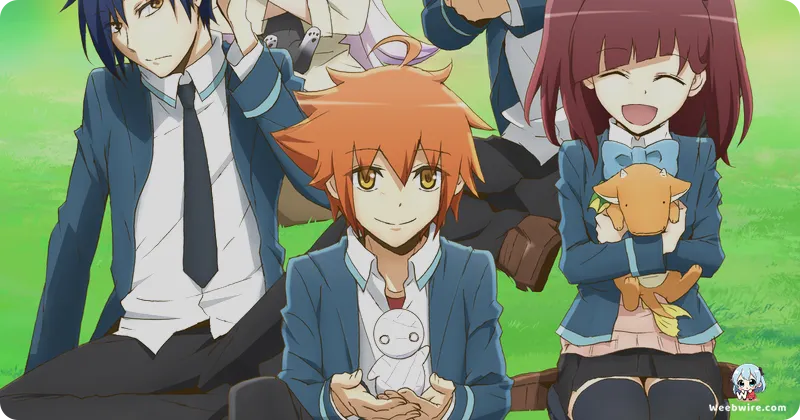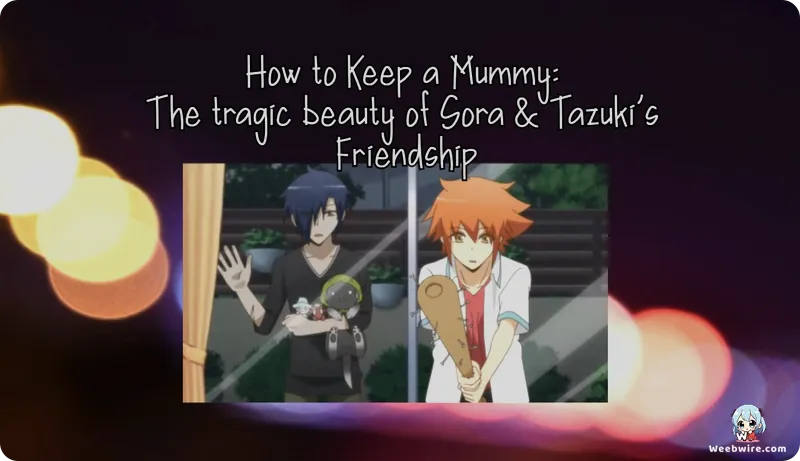The Untold Story of Mii-kun: Deep Dive into the Gentle Genius of How to Keep a Mummy

When viewers consider the cozy, utterly charming supernatural series How to Keep a Mummy (Miira no Kaikata), they typically envision the high school student Sora Kashiwagi caring for his miniature, bandage-wrapped companion, Mii-kun. However, beneath the show's deceptively simple premise lies a wealth of fascinating production trivia and deliberate creative choices that established its status as a unique slice-of-life success.
The series, which begins with the tiny creature Mii-kun arriving via a mysterious package, masterfully reverses traditional horror tropes. Mii-kun, standing a mere 12 centimeters (about five inches) tall, is the direct opposite of the shambling, ancient undead figures commonly depicted in media. Instead, he embodies the loyalty and mild anxiety often associated with a small dog. This strategic decision to drastically shrink the mythological monster was fundamental to the manga's initial appeal and translated seamlessly into the anime adaptation.
The narrative heavily emphasizes Mii-kun’s vulnerability. He requires warmth, needs regular baths, and cries easily. This approach compels the audience to disregard traditional notions of curses or danger and instead engage with the mundane, emotional labor of caretaking. This elevation of domesticity involving a supernatural being creates a deeply resonant viewing experience for the audience.
Studio 8-bit's Successful Pivot
Adding to the series’ surprise factor was the choice of the animation studio: 8-bit. Known predominantly for high-octane action and mecha series, including successful titles like Infinite Stratos and That Time I Got Reincarnated as a Slime, 8-bit’s selection for adapting How to Keep a Mummy represented a significant and successful strategic shift. This gentle series required subtle character animation, soft color palettes, and minimal conflict, effectively showcasing the studio's impressive range.
The adaptation’s success demonstrated their versatility, proving an ability to pivot from explosive combat sequences to the delicate portrayal of a creature sleeping comfortably inside a teacup. The production team had to prioritize nuanced character interaction and environmental detail over visual spectacle.
Consistent Subversion of Mythology
The show continues its theme of radical subversion through its supporting cast of mythological creatures. Pochi, the oni (demon), is depicted not as a fearsome ogre, but as a small, intensely shy being who fits easily into a satchel. Similarly, the baku (dream-eater), traditionally a large, elephant-like entity, manifests as Mukumuku, a fluffy, anxious, floating sheep-like creature. Even Conny, the Anubis-inspired figure, functions less as a deity of the dead and more as a playful, cat-like source of minor domestic mischief. This consistent comedic choice, transforming terrifying folklore figures into harmless, dependent pets, forms the structural backbone of the series’ unique humor.

Adapting the Digital Source
It is also crucial to note the source material’s origins. How to Keep a Mummy began as a web manga serialized on Comico, a Japanese digital platform famous for its vertical scroll format and full-color art. Adapting this specific digital aesthetic, with its vignette-like pacing and clean, vibrant color palette, into a standard television format required meticulous effort from the production team. Special focus was placed on scene composition to retain the intimate feeling of the web manga, particularly in scenes contrasting the height of the human characters with the miniature creatures.
Finally, the sound design for Mii-kun deserves specific recognition. Since the mummy communicates solely through high-pitched "mii" noises, chirps, and gestures, the sound director and voice actors developed an intricate, non-verbal vocabulary. These carefully managed sound cues effectively convey a spectrum of emotions, allowing viewers to build a strong, empathetic bond with the creature, cementing the anime’s emotional appeal and overall success.
Credits
How to Keep a Mummy
Author
Kakeru Utsugi
Cover Art
Kakeru Utsugi
Studio
8-bit
Publisher
NHN comico (Comico)
Producers





